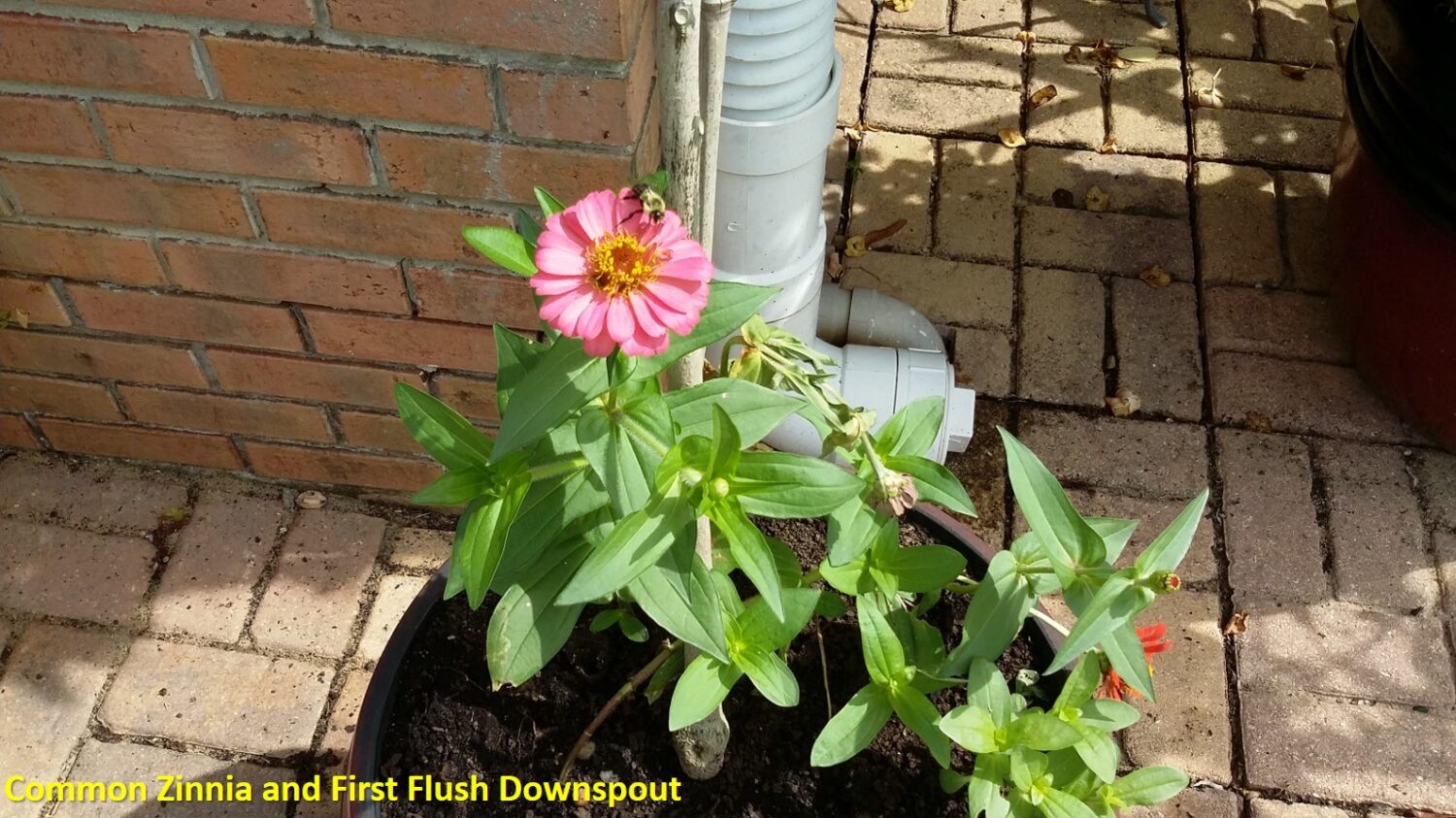Summary: Although we lost many of our citrus trees in the hard freeze of 2017, the greenhouse arrived in time to save our most valuable potted plants. We changed the rain covers and liners of our hydroponics tanks (a big job) and continued to test simplified designs for raft supports. Our daily responsibilities begin to shift from construction to maintenance. Sadly, after 4 years of struggle, we lost the battle with Japanese Ashitaba (an expensive loss) and we shortened the 12′ heat shield trellis after it blew down in a storm. Finally, we designed and installed the interior features of the storm shelter.
Emergency Grow Room (Garage) 011318

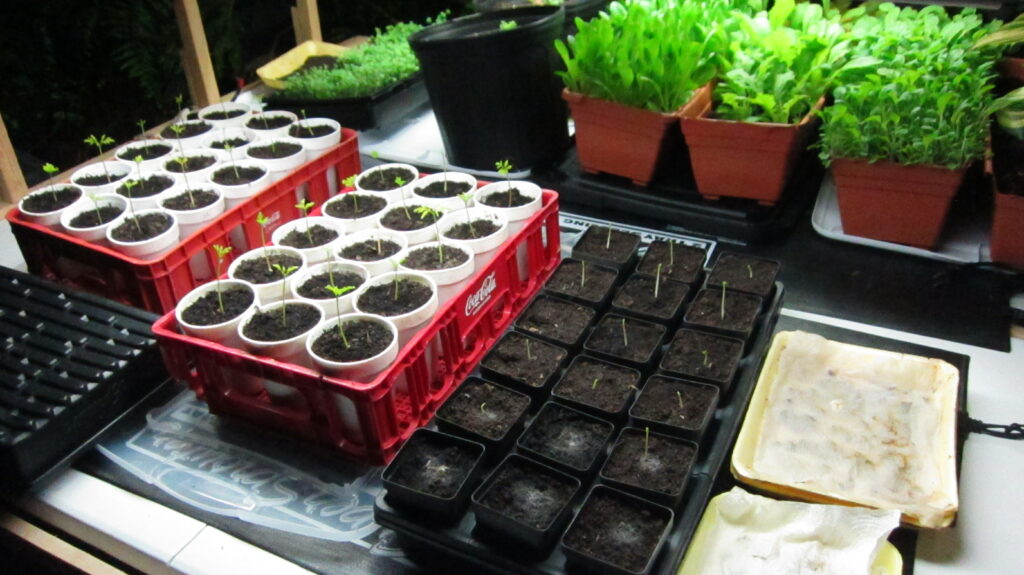
While waiting for the new greenhouse, we stuffed all that we could into the garage (above).
Aside from providing a convenient semi-conditioned space, the garage offers a large door that makes it easy to wheel our plants in and out quickly—even the 6′ Euphorbia milii (aka The Christ Thorn).
Our garage also contains folding plastic seedling tables with overhead grow lights. Seedling trays rest on warming mats that provide the constant temperatures needed for healthy growth. Electric timers allow us to control the length of the growing day.
Tip: Depending on their size and wattage, Grow Lights can sometimes require that you upgrade the breaker for the electric circuit in your garage. The garage proved so useful that we added new circuits to accommodate more lights.
New EBG Greenhouse 011418 (link)
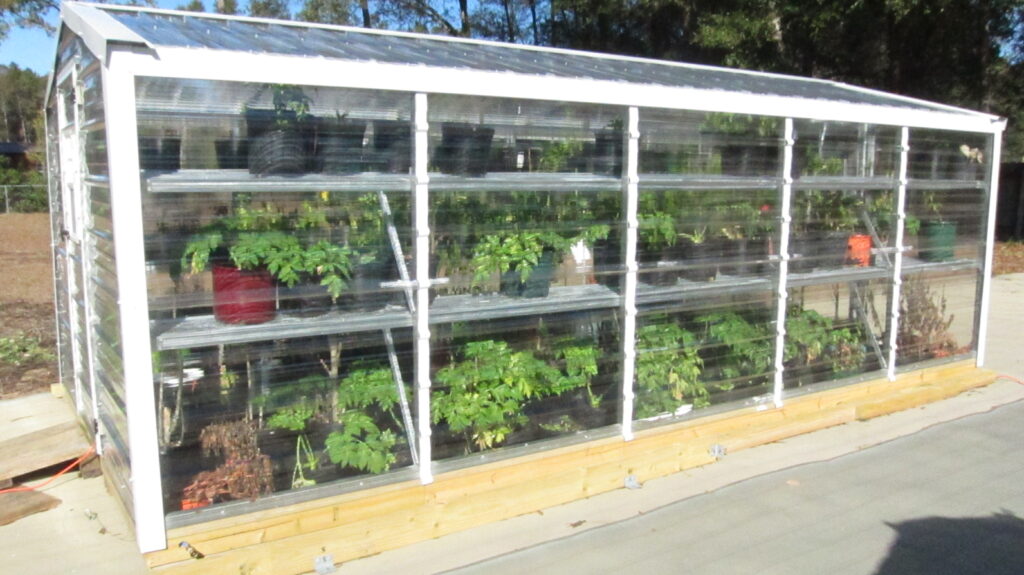
Arriving in the nick of time, we transferred everything from the garage to the new greenhouse (above).
Packed to the rafters: The green leafy plants on the bottom and middle shelves (above) are Japanese Ashitaba. When the sun is shining, the heat inside the green house builds up quickly (even on a cold winter day). Doors at each end help to provide ventilation. We also run a large portable fan to keep the air moving. The relatively flat peak (of the roof) is ideal for keeping the heat at a manageable level. Tip: Excess heat is just as dangerous (to plants) as freezing temperatures.
Read more about EBG’s Steel Framed Greenhouse (including the Bottom Line).
Hard Winter Freeze 011818
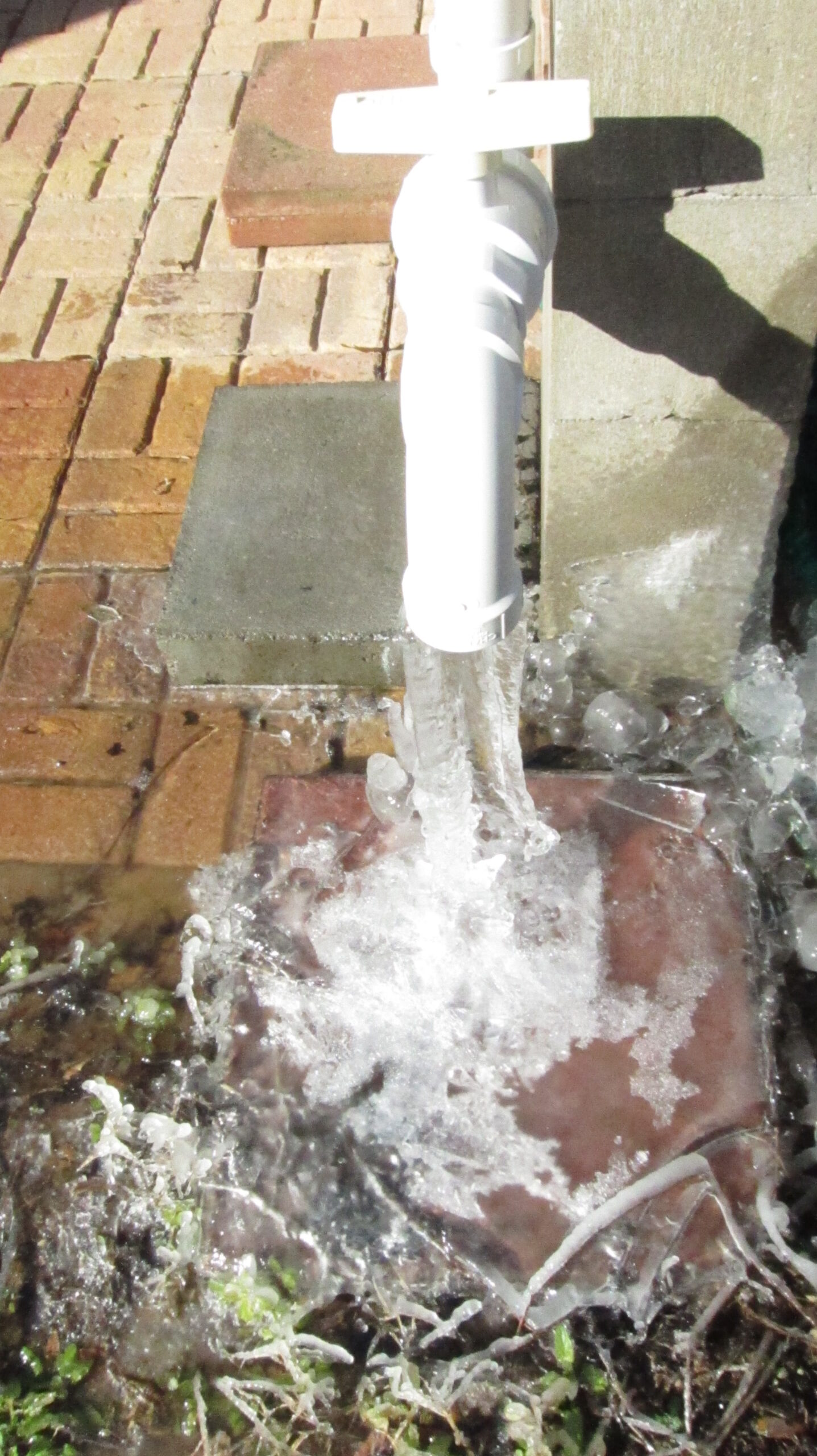
.
.
This Winter’s hard freeze damaged our water system, killed dozens of our citrus trees and
caused damage that would take months to repair. It also moved us to diversify our choice in
fruit trees. We brought in a dozen Chicago Hardy Fig trees, which are able to withstand
temperatures that drop to minus 20 degrees.
.
.
.
.
.
Garden Snow Covers Photos 011818 (link)
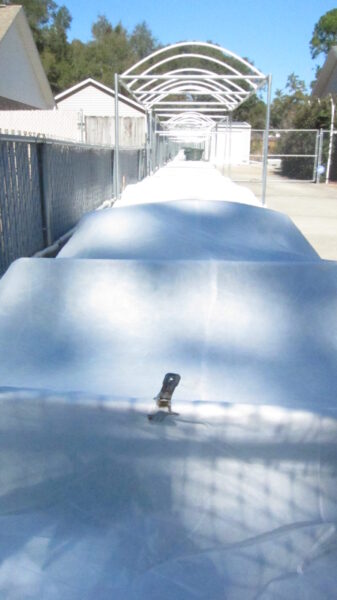
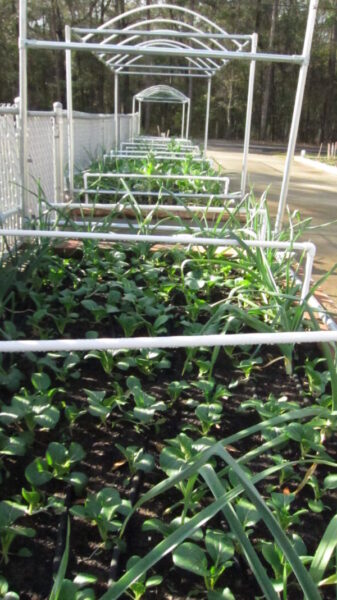
Row cover fabric is draped and clamped to the portable PVC cover frames (above left) to provide protection for the Bok Choy in these raised beds. The uncovered frames can be seen above (right).
Read more about EBG’s Raised Garden Beds (including the Bottom Line).
Hydro Tank Cover and Liner Change 030118 (link)
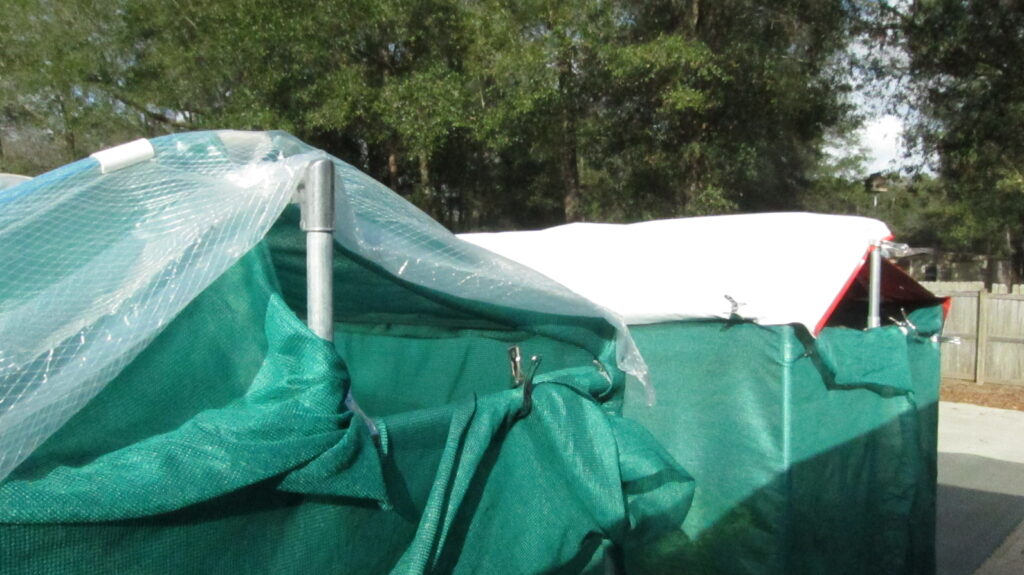
To test the BillboardVinyls material (prior to replacing the tank liners), we changed out the rain covers on our gen-2 tanks. The cover on the left (above) shows green sunscreen fabric under a sheet of string-reinforced plastic. The plastic degrades in about two years of exposure. The tank on the right has the new vinyl cover. No sunscreen fabric is needed. The vinyl also lasts about three years. In addition to eliminating the need for sunscreen fabric, the vinyl is stronger and doesn’t cave in during a heavy rainstorm (a cave-in can swamp the tank).
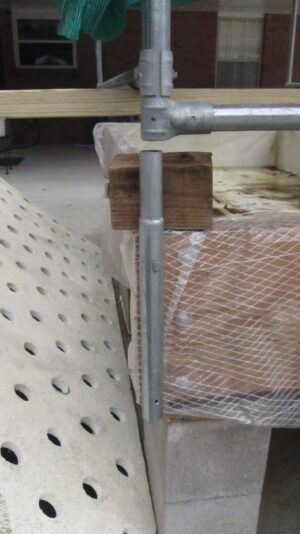
To facilitate removal for tank maintenance, the steel rain cover frames of the hydroponics beds are fitted over short tapered posts that are bolted to the frame of the tank itself (above). Constructed of the same galvanized pipe that is used for chain-link fences, this socket-and post design on our gen-2 tanks proved very effective. Note that there is no need to move the cover frame away from the tank. It is merely lifted and supported by 2×4 boards (as shown above and below) to provide the room needed to replace the tank liner.
After three years of outstanding service, sun damage (around the rim and outer skirt) made it necessary to replace the hydro tank liners. Originally lined with a continuous sheet of string-reinforced plastic, we decided to use BillboardVinyls instead.
Read more about EBG’s Hydroponic Tanks (including the Bottom Line).
.
.
.
Springtime at EBG 031618

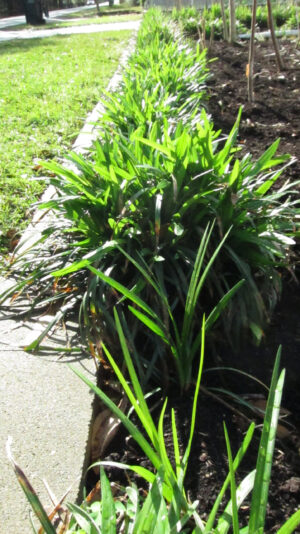
Originally planted around the perimeter of the raised beds to provide aesthetic appeal, the roots of the monkey grass (above right) had a habit of pushing the concrete blocks out of alignment as it grew. Thus, it all had to be relocated to the back garden where it provides an attractive perimeter for several unstructured plots.
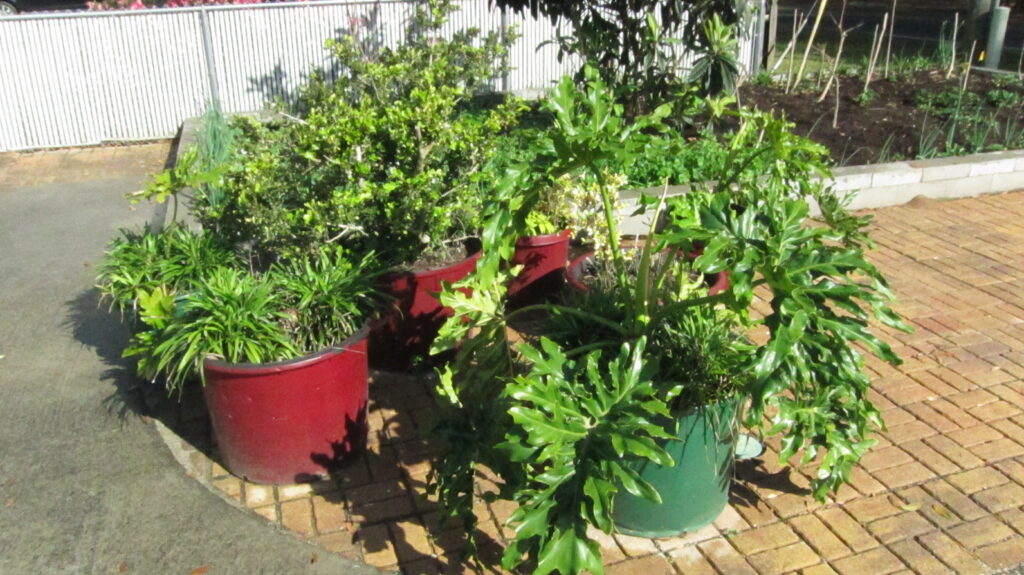
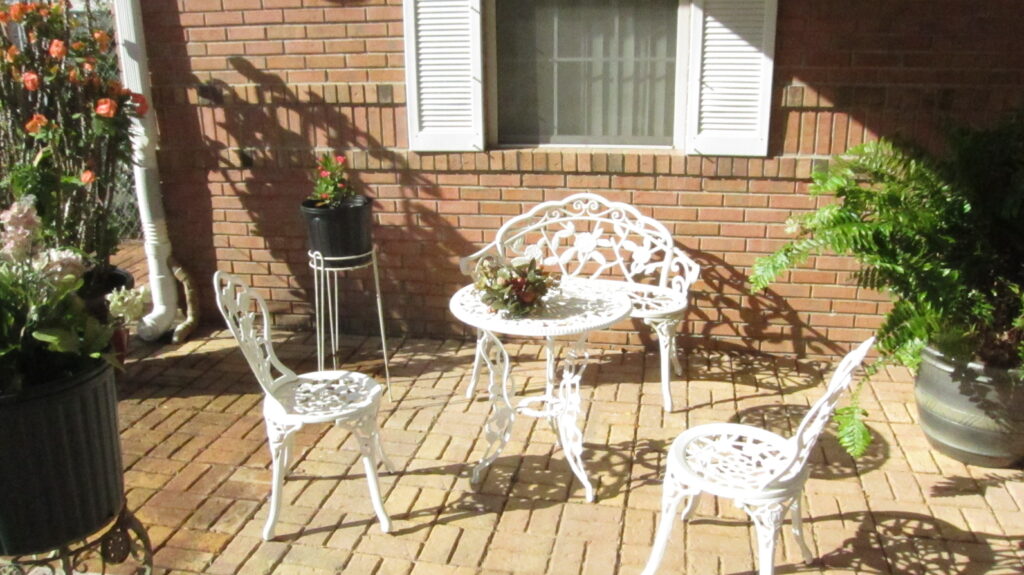
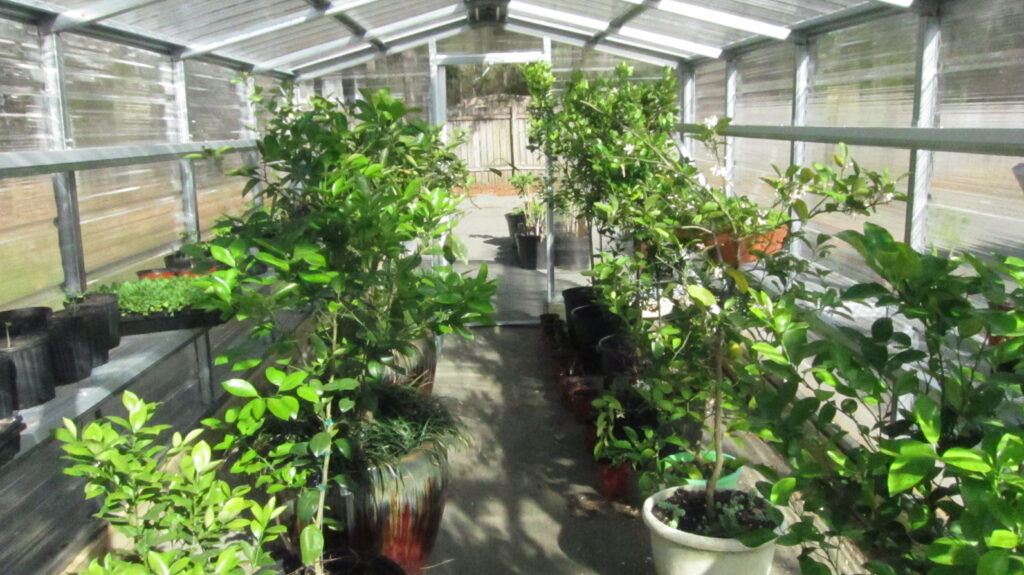

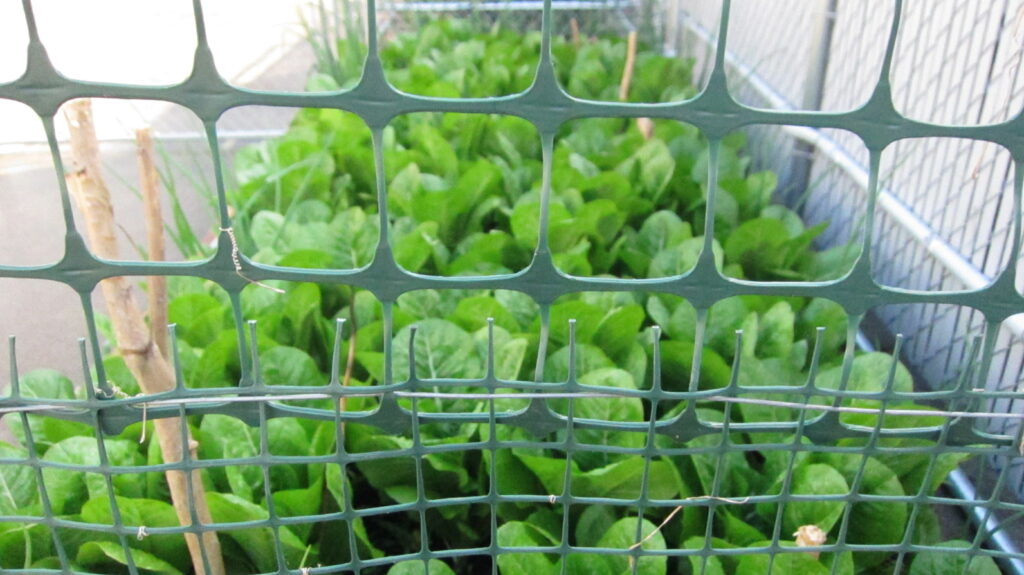
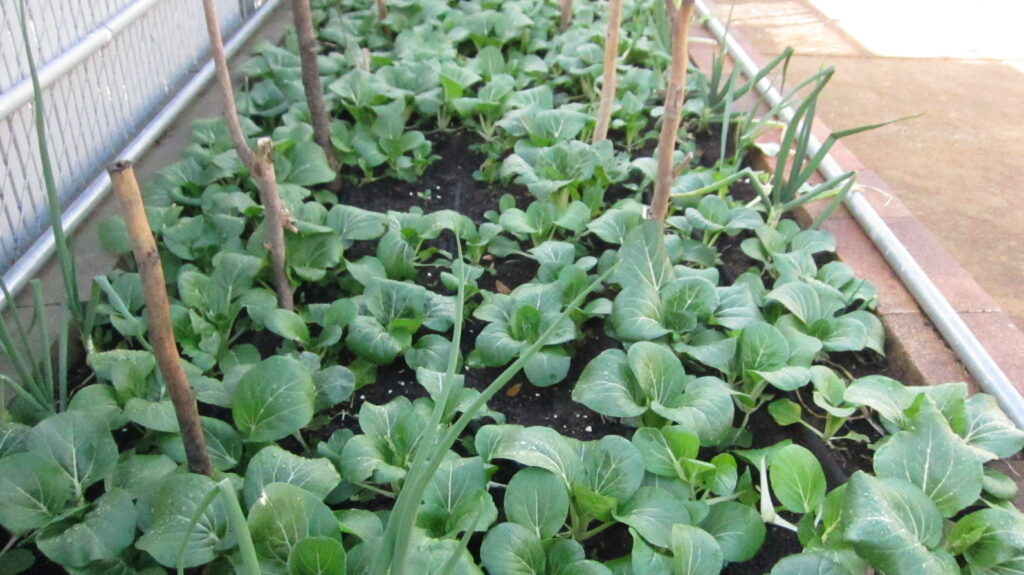
Plastic fencing (above left) is attached by wires (to the steel frame) to provide portable trellises within the cover frames of each raised bed.
Ashitaba Cover Frame 050118
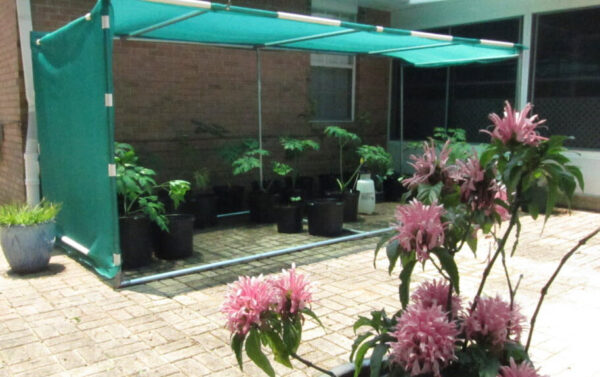
.
.
The Ashitaba cover frame.
.
.
.
.
In the Greenhouse 051418
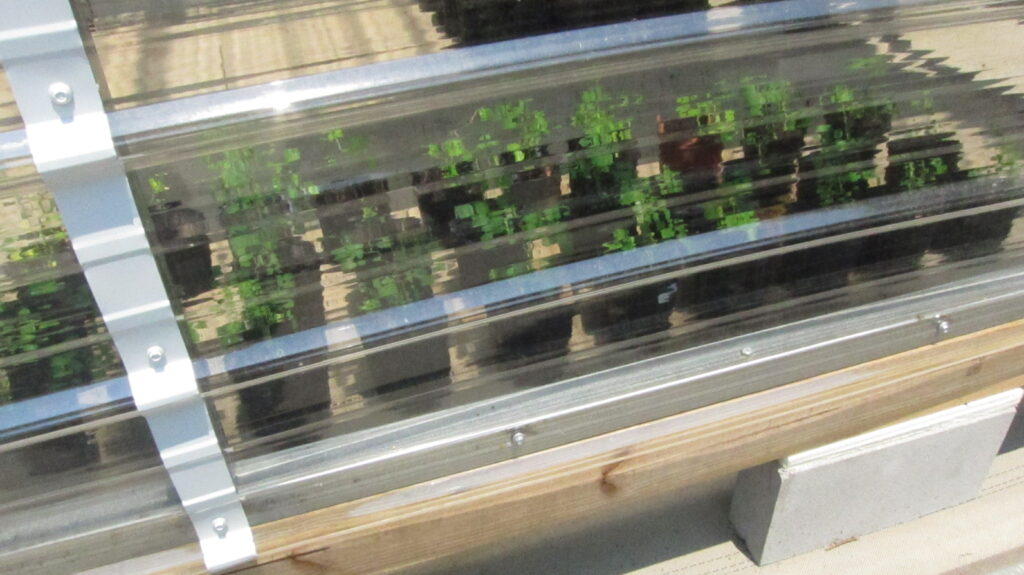
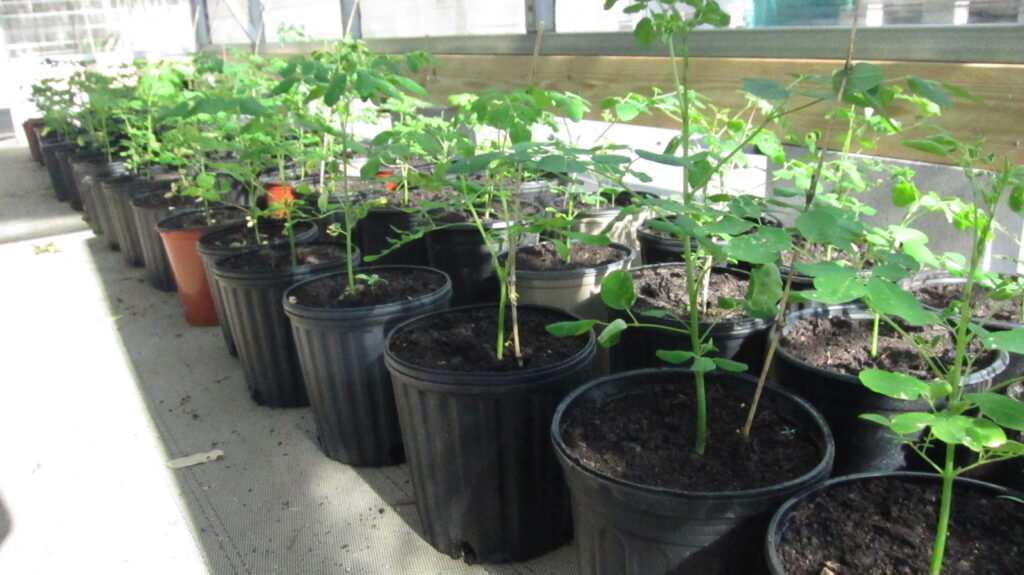
The Rear Garden 051418

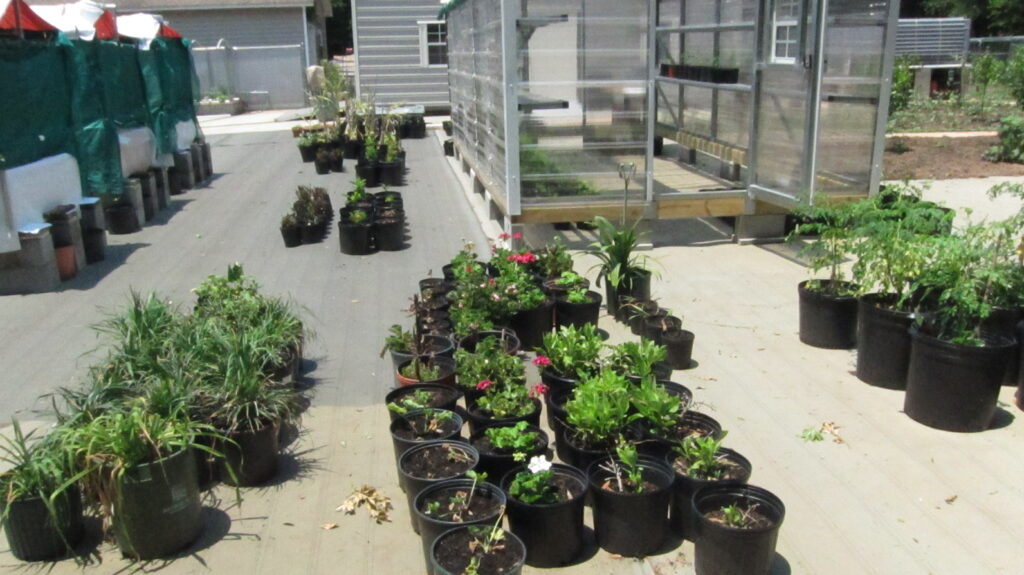
The rear garden is under construction (above left). The greenhouse was lifted onto blocks to provide ventilation (above right).
The Front Patio 052618
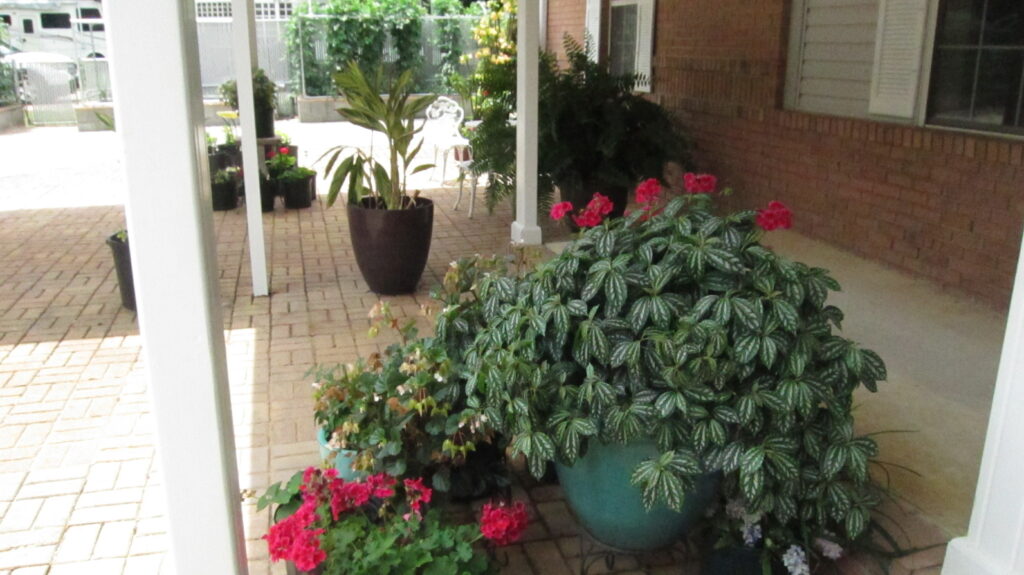
The Front Beds 052618
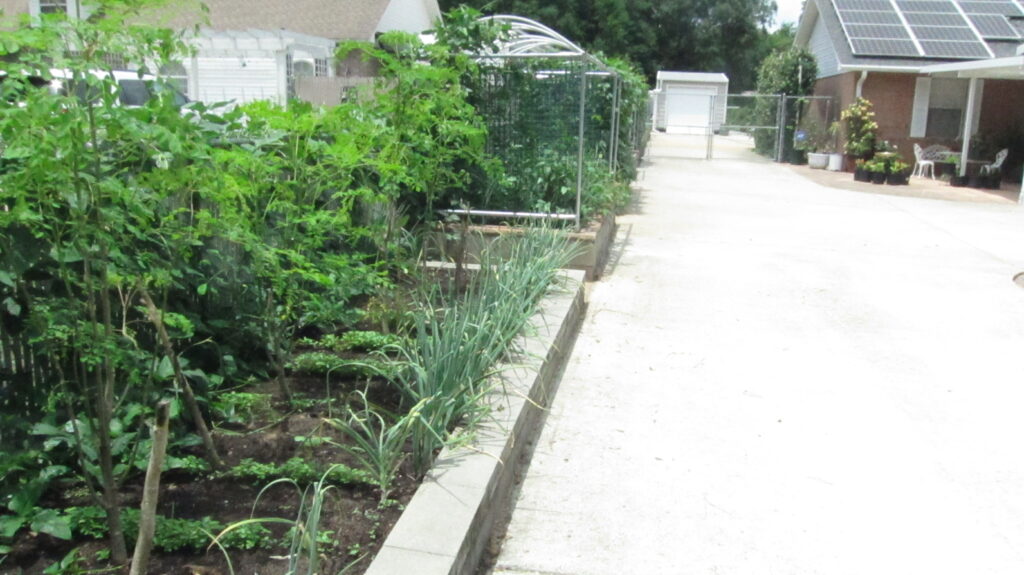
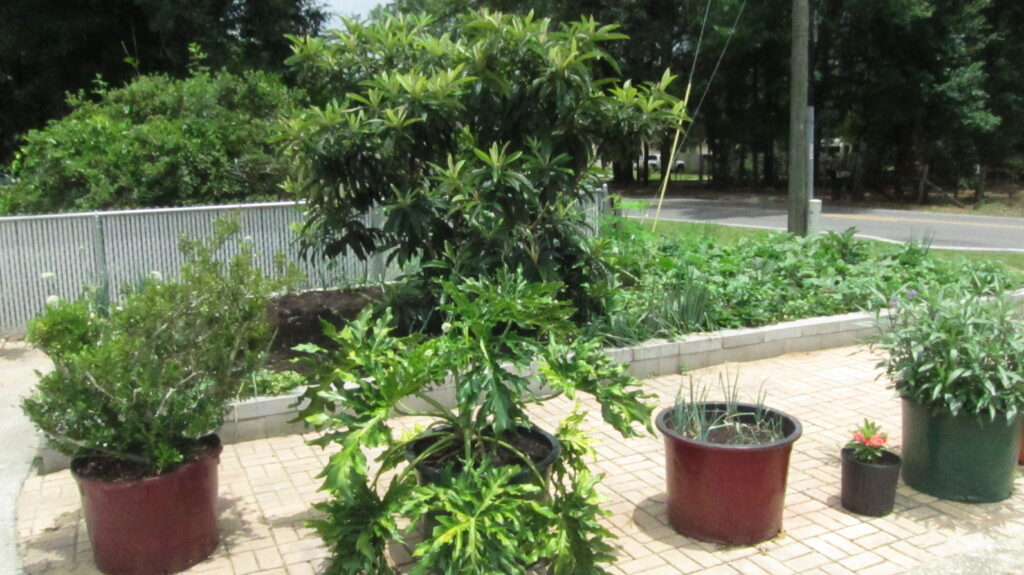

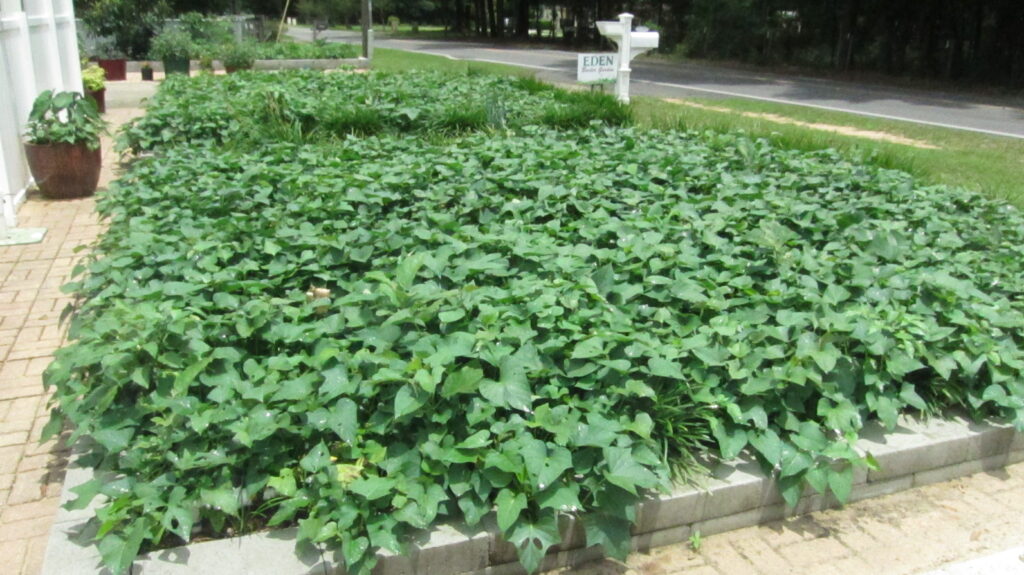
Moringa Seedlings 060218

Office Wiring 071018

It’s a mess, and this is only a small portion of the office wiring.
Surface Cleaning 080618
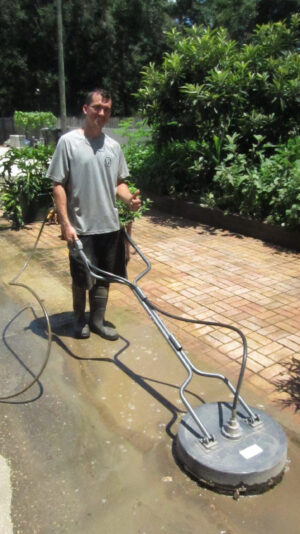
.
.
With 116 yards of concrete and six paver patios, maintenance is a big chore. Pressure washing the concrete is a regularly occurring task. Licensed and insured, Pierce Mobile Services LLC (left) handles most of the work for us. Offering outstanding service at very reasonable prices, we can’t recommend them enough. Find them on Facebook @piercemobileservices.
.
.
.
.
.
.
.
Eden Garden Photos 082218
The following images show Eden as it looked on 082218.
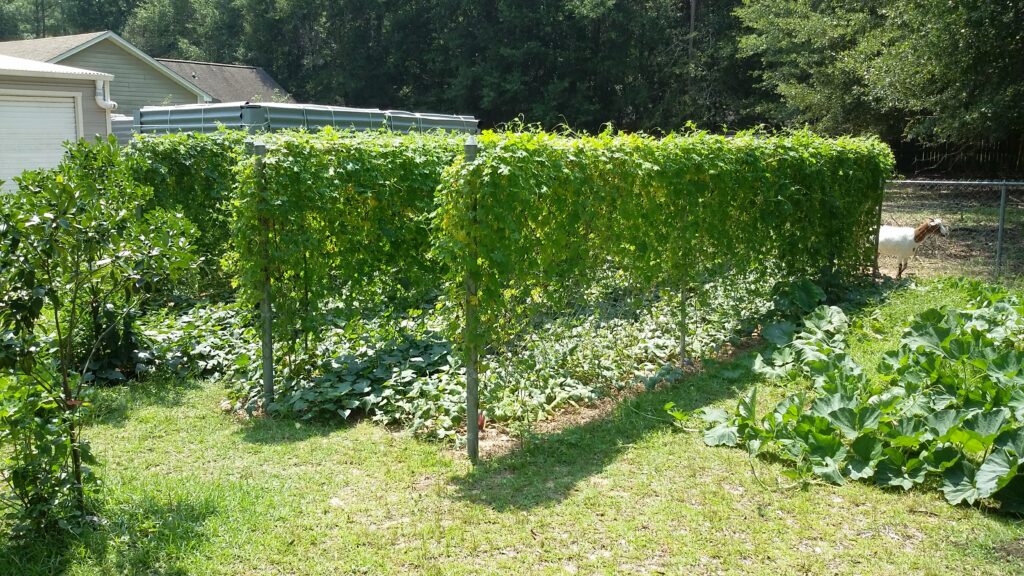
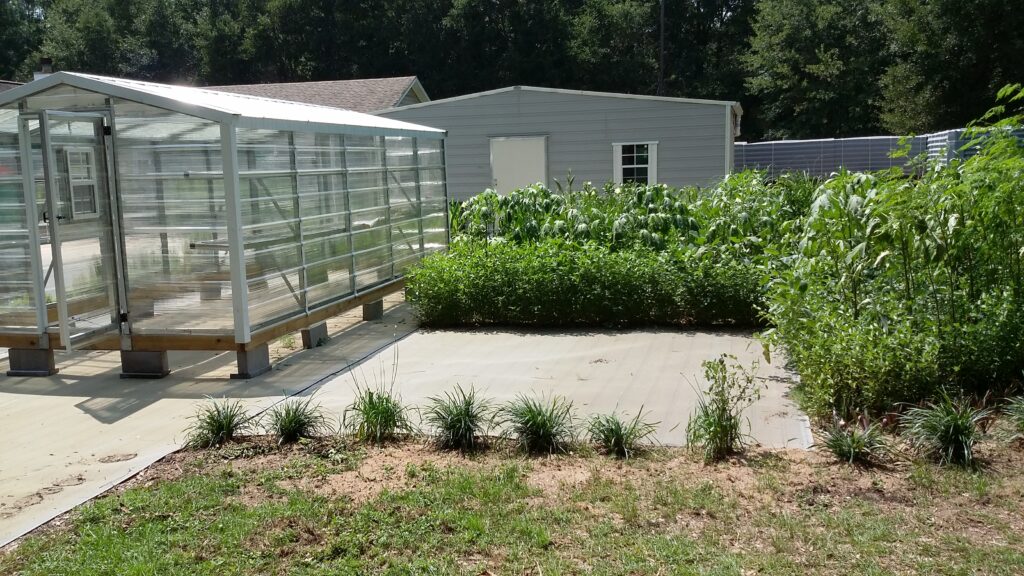
The rear garden (above).
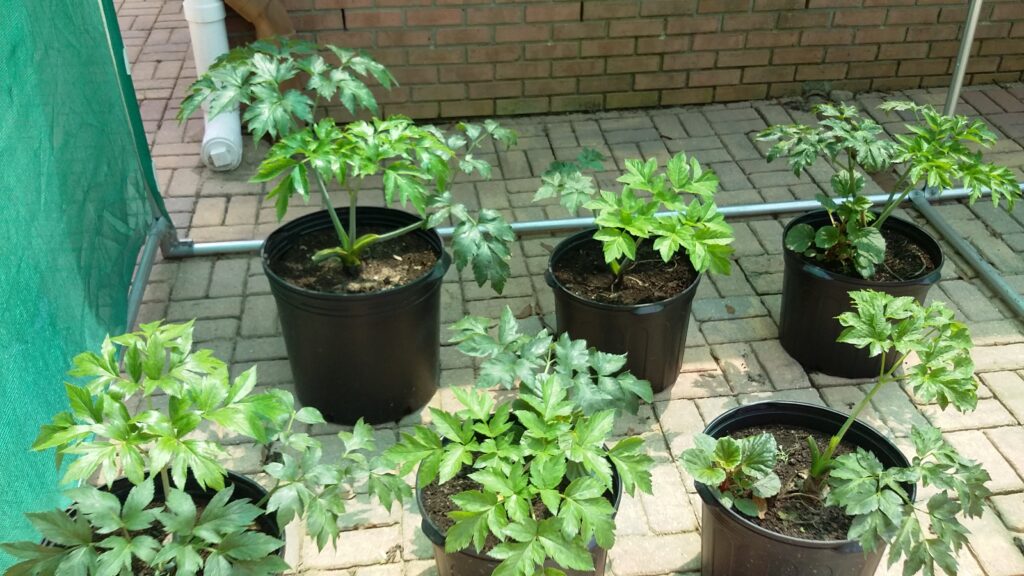
Japanese Ashitaba (above) beneath the new shade frame, designed to reduce the direct sunlight on the Northeast patio (the coolest patio on the property). Although we tried to simulate the cool humid coastal conditions of their native environment, our area is just too hot, and all attempts proved unsuccessful.

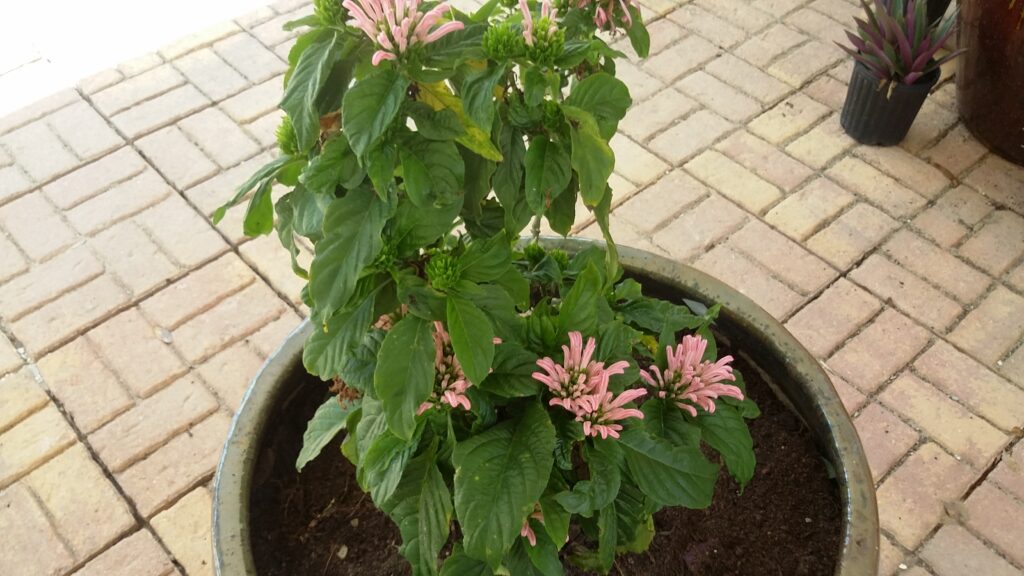
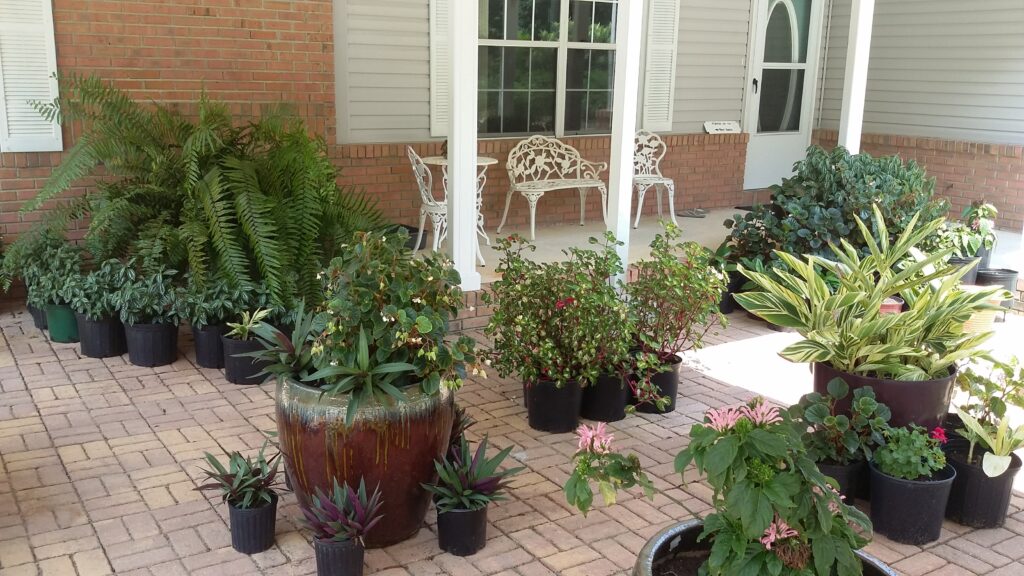


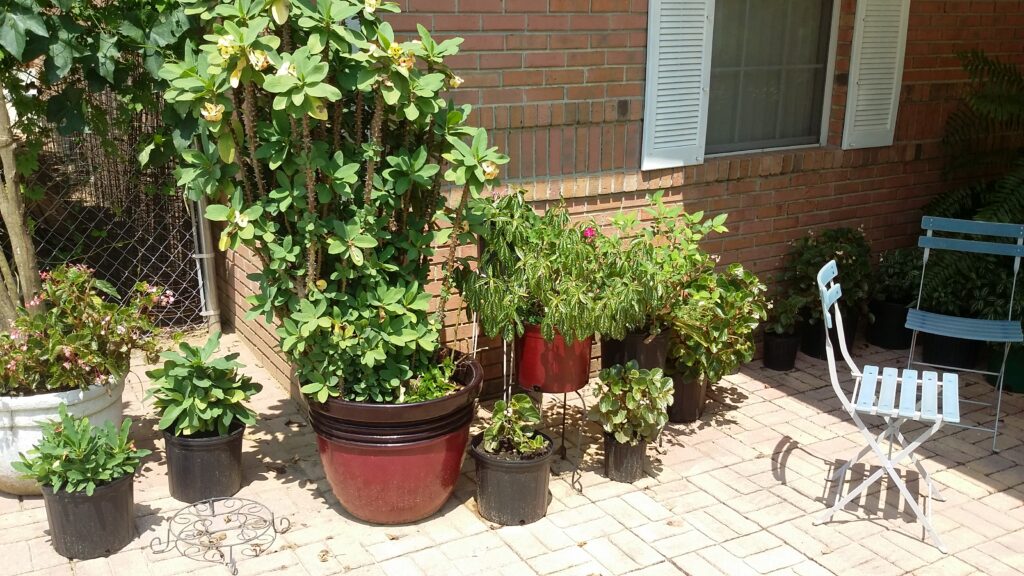
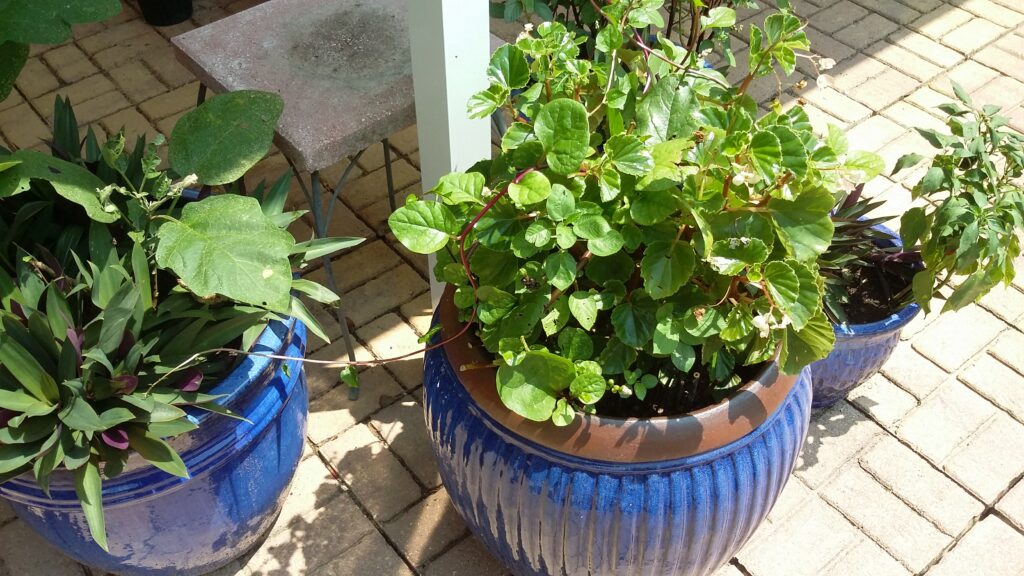

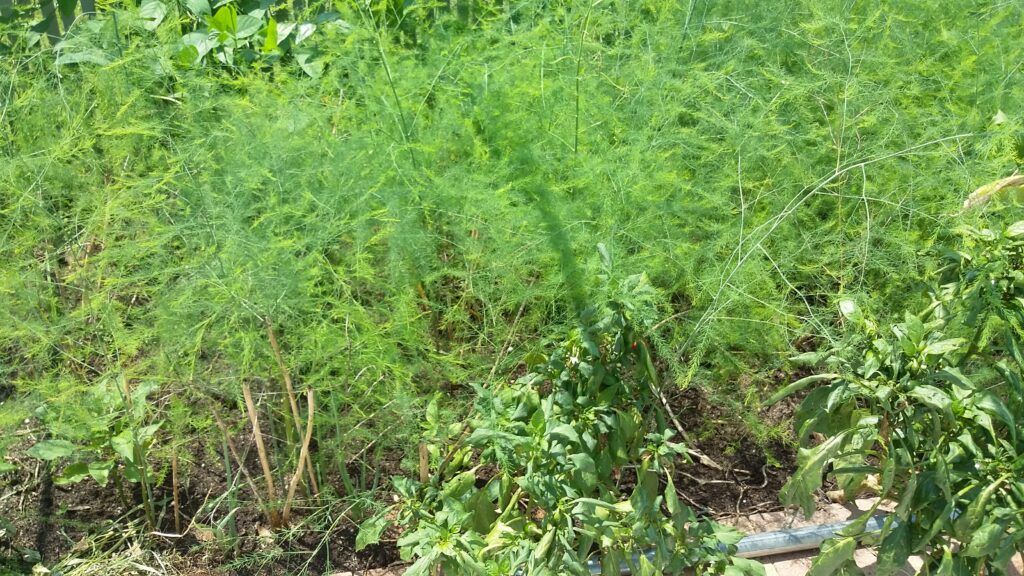
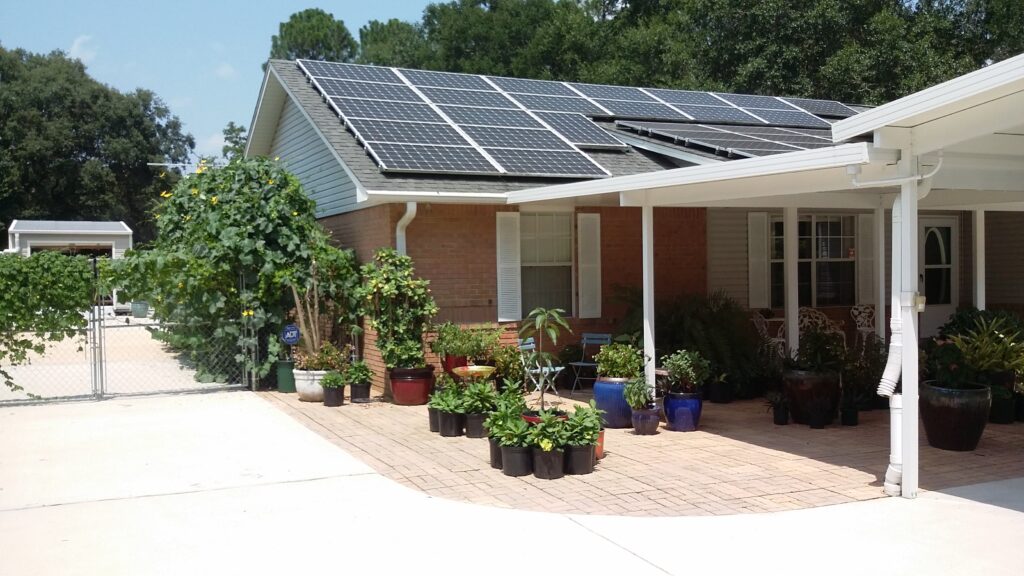
Asparagus fern in Raised Beds #7 and 8 are looking good (above left). Transplanted from the garden of one of our friends, we hope the plants survive. Stay tuned.
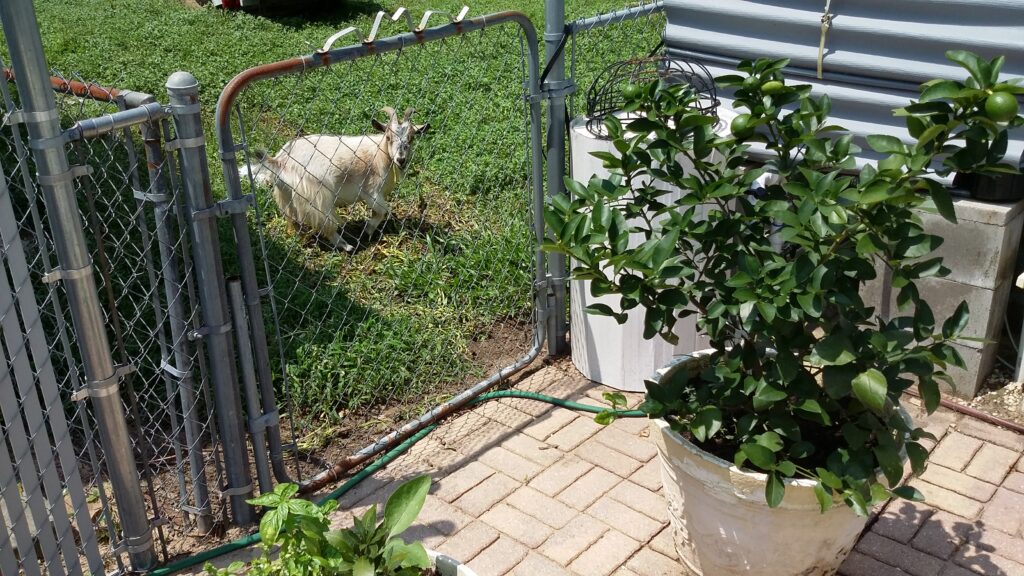

Eden Garden Photos 090118
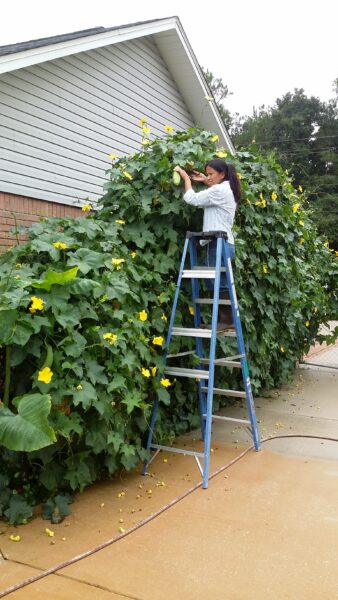
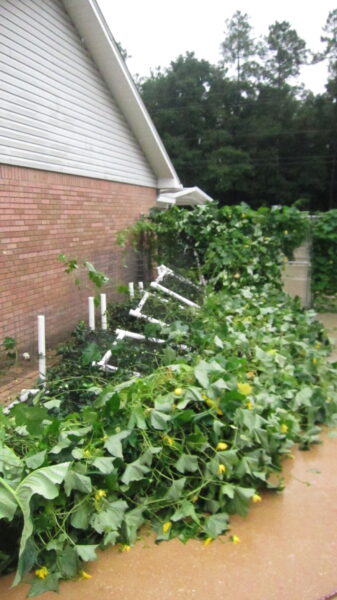
Constructed of 2″ PVC (in 3″ sockets) and erected in a 2’x22′ space on the hot side of the house (above left), the west heat shield trellis is designed to protect the wall of the house from the hot summer sun. Planted in Confederate Jasmine and a variety of vining plants (luffa gourd in this photo), this tall trellis (11′ foot tall) served its purpose well until high winds brought it down in the winter of 2018, at which time it was shortened to 6′ tall (above right).
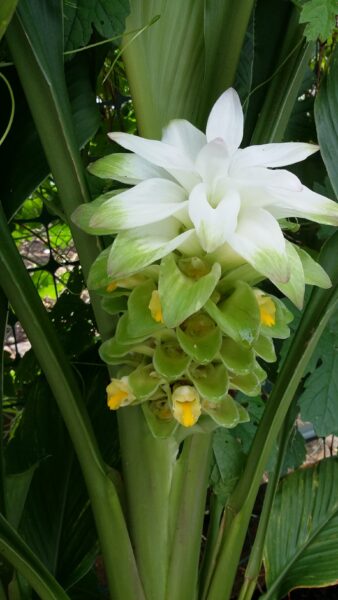
Turmeric blooms but once in a growing season that lasts about 10 months. Turmeric (Curcuma longa) is a flowering plant of the ginger family, the rhizomes of which are used in cooking. The plant is a perennial, rhizomatous, herbaceous plant native to the Indian subcontinent and Southeast Asia that requires temperatures between 68 and 86 °F and a considerable amount of annual rainfall to thrive. Plants are gathered each year for their rhizomes, some for propagation in the following season and some for consumption.
The rhizomes are used fresh or boiled in water and dried, after which they are ground into a deep orange-yellow powder commonly used as a coloring and flavoring agent in many Asian cuisines, especially for curries, as well as for dyeing, characteristics imparted by the principal turmeric constituent, curcumin.
.
Storm Shelter Interior Build 101118 (link)

Constructed of .25″ carbide steel, this custom shelter was less expensive than expected. Designed to occupy a side wall of the garage, this unit was designed to meet our specific needs. Note the steel U-shaped attachment points welded to the roof (left). They bear the entire weight of the upper interior cabinetry.
Read more about EBG’s Steel Storm Shelter / Faraday Cage (including the Bottom Line).
.
Next up, Year 6 (2019).
.
.
.
.
.
.
.
